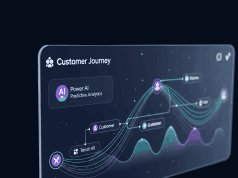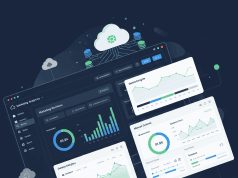In the ever-evolving landscape of digital marketing, the importance of data has never been more paramount. Marketers are collecting vast amounts of information—from customer behaviors and preferences to online interactions and conversions. However, raw data itself is not enough; it is the insights derived from this data that drive strategic decision-making. This is where analytics plays a critical role within a company’s MarTech (marketing technology) stack.
Understanding the MarTech Stack
A MarTech stack is a collection of tools and technologies that marketers use to plan, execute, and analyze marketing campaigns. This stack often includes customer relationship management (CRM) systems, content management systems (CMS), email marketing tools, social media platforms, and, crucially, analytics solutions. The integration of these tools allows for seamless data flow and comprehensive analytics, enabling marketers to understand their audience and optimize their strategies effectively.
The Importance of Analytics
Analytics in the MarTech stack serves as the backbone for data-driven decision-making. By employing analytics tools, marketers can perform the following crucial functions:
1. Data Collection and Integration
Analytics tools facilitate the collection of data from various sources, such as website interactions, social media engagement, email campaigns, and sales conversions. By integrating these data points, organizations can gain a holistic view of their customer journey and interactions across multiple channels.
2. Performance Measurement
Analytics enables marketers to measure the success of their campaigns through key performance indicators (KPIs). Metrics such as click-through rates, conversion rates, and return on investment (ROI) provide valuable insights into what strategies are working and what areas need improvement.
3. Segmentation and Targeting
By analyzing customer data, marketers can segment their audience into distinct groups based on demographics, behaviors, and preferences. This segmentation allows for more targeted marketing efforts, ultimately leading to higher engagement and conversion rates.
4. Predictive Analytics
Advanced analytics capabilities, including machine learning and AI, enable marketers to predict future behaviors and trends based on historical data. Predictive analytics can help identify which customers are more likely to convert or churn, allowing for proactive strategies to be implemented.
5. Real-Time Insights
The landscape of digital marketing changes constantly. Real-time analytics allows marketers to respond to trends, customer feedback, and campaign performance instantaneously. By adjusting strategies on-the-fly, organizations can better cater to their audience’s needs.
The Integration Challenge
Despite the clear benefits of incorporating analytics into the MarTech stack, many organizations face challenges in integration. Data silos, inconsistent data formats, and lack of communication between departments can hinder the effectiveness of analytics efforts. To maximize the value of analytics, it is crucial for organizations to ensure their tools are interoperable and that there is a culture of collaboration across marketing, sales, and analytics teams.
Best Practices for Leveraging Analytics
To harness the full potential of analytics within a MarTech stack, organizations should consider the following best practices:
1. Establish Clear Objectives
Before implementing analytics solutions, define clear objectives for what you hope to achieve. Whether it’s increasing website traffic or improving customer retention, having measurable goals will guide your analytics efforts.
2. Invest in the Right Tools
Choose analytics tools that fit your organization’s needs and budget. Whether it’s Google Analytics for web traffic analysis or more advanced platforms like Adobe Analytics, the right tools will streamline data collection and analysis.
3. Foster a Data-Driven Culture
Encourage a mindset where teams regularly use data to inform decisions. Provide training and resources to ensure that all stakeholders can effectively interpret and leverage data insights.
4. Regularly Review and Adjust
Analytics is not a one-time effort but an ongoing process. Regularly review your analytics frameworks and adjust strategies based on the insights gathered. Continuous improvement will lead to better results over time.
Conclusion
In the complexity of modern marketing, analytics serves as the compass guiding organizations through the digital mire. By effectively integrating analytics into their MarTech stack, companies can transform raw data into actionable insights, enhancing their marketing strategies and ultimately achieving better business outcomes. In this data-driven age, those who harness the power of analytics will not only keep pace with the competition but will thrive within their respective markets.









